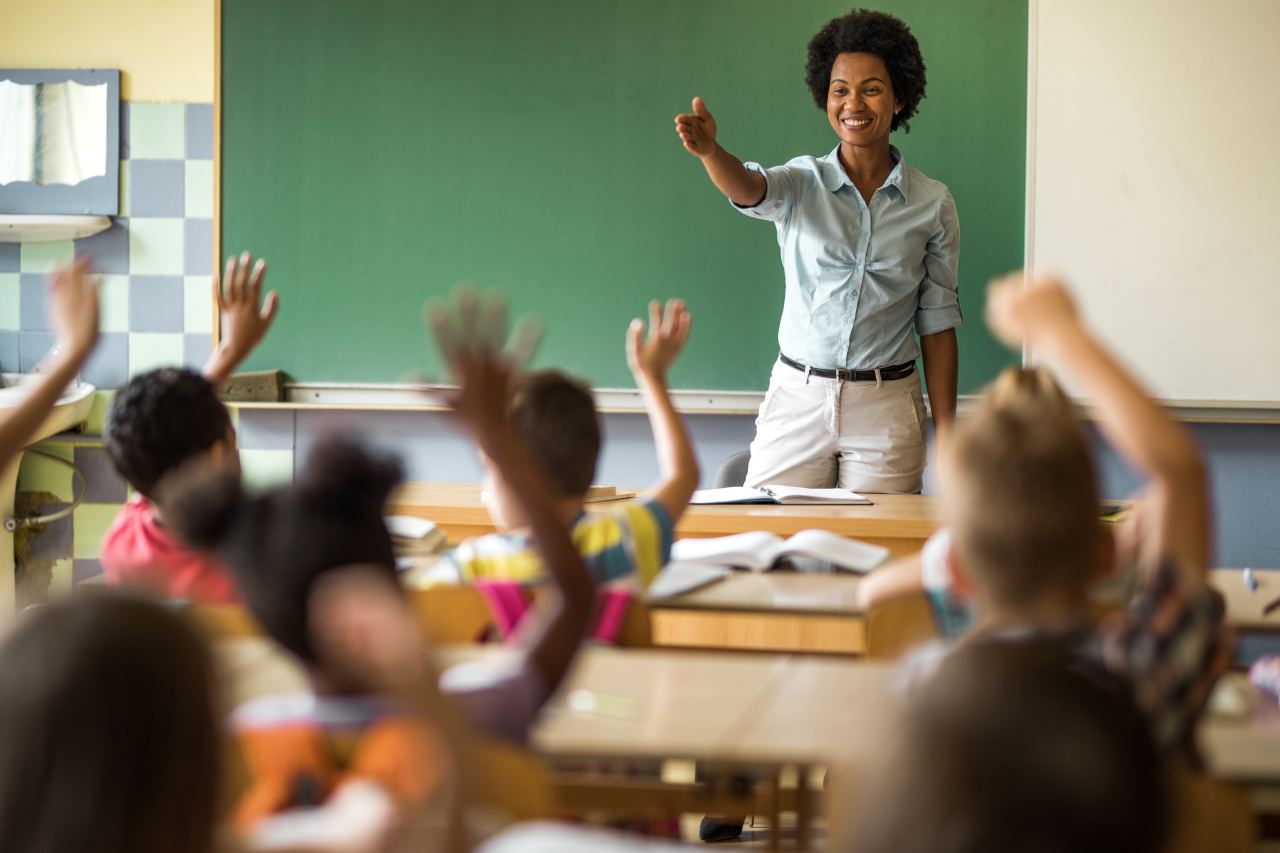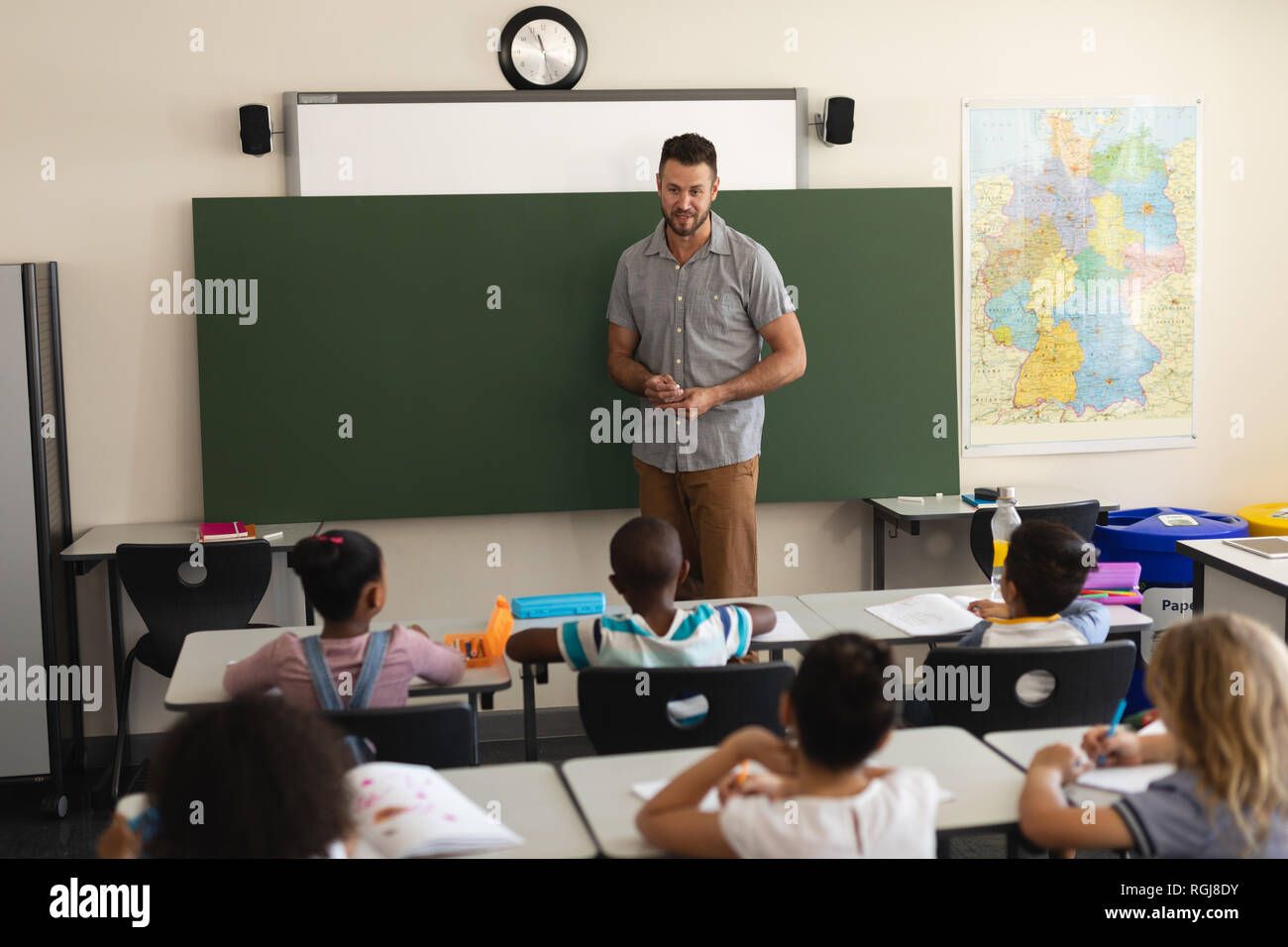Affordable Primary Science Tuition Singapore for All Learning Needs
Affordable Primary Science Tuition Singapore for All Learning Needs
Blog Article
A Comprehensive Overview to the Numerous Learning Approaches in Key Science Instruction
The exploration of diverse discovering methods in primary science direction offers an opportunity for educators to improve trainee interaction and understanding substantially. By checking out hands-on knowing techniques, inquiry-based methods, and collaborative approaches, we can determine efficient methods that cater to numerous learning styles.

Hands-On Knowing Methods
Hands-on understanding techniques play a critical function in key scientific research instruction, engaging students in active exploration and testing. These techniques enable students to connect straight with products and sensations, fostering a deeper understanding of scientific concepts. By using manipulatives, models, and real-life experiments, educators create an environment where students can observe, hypothesize, and test their ideas.
Such techniques not just boost understanding yet additionally grow essential reasoning and analytic abilities. When trainees join tasks like developing basic makers, growing seeds, or carrying out chemical responses, they are motivated to ask questions and seek solutions via their own observations. This experiential approach helps to debunk complex clinical principles, making them much more relatable and accessible.
In addition, hands-on understanding advertises partnership among peers, as pupils commonly operate in groups to perform experiments or share searchings for. This teamwork not just enhances their knowing experience but additionally establishes essential social abilities. Eventually, incorporating hands-on methods in key science instruction promotes a lifelong love of understanding and interest concerning the natural globe, laying a strong structure for future academic searches in science and past.
Inquiry-Based Discovering
Inquiry-based learning is a training approach that urges students to ask concerns, explore phenomena, and create their very own understanding of scientific principles. This technique changes the focus from conventional teacher-led instruction to a much more student-centered experience, where learners take the campaign in their educational trip. By cultivating interest, inquiry-based understanding promotes deeper interaction with the material, allowing pupils to check out topics in a purposeful context.
In practice, this approach typically includes hands-on experiments, observations, and essential reasoning tasks that line up carefully with the scientific technique. Students are motivated to develop theories, style investigations, and assess data, which cultivates vital skills such as logical and problem-solving reasoning. The duty of the instructor in this structure is to assist in exploration, guiding students with the inquiry process while motivating independent thought and cooperation.
In addition, inquiry-based discovering nurtures a sense of possession over the understanding procedure, encouraging trainees to seek expertise proactively. This technique not just improves understanding of clinical ideas however additionally cultivates a long-lasting love for knowing, furnishing pupils with the skills essential to browse a progressively complicated world.
Collaborative Understanding Approaches
Collective learning methods encourage students to involve in purposeful interactions with peers, promoting a common responsibility for their educational results. In key science instruction, these approaches encourage learners to function with each other to discover scientific concepts, fix troubles, and perform experiments (primary science tuition Singapore). By taking part in group tasks, pupils can leverage diverse perspectives, enabling richer understanding and retention of scientific understanding
One trick facet of joint learning is the emphasis on interaction abilities. Students must verbalize their thoughts, listen actively to others, and discuss concepts, every one of which are important expertises in both real-world and scholastic contexts. This social communication not just improves their understanding of clinical principles but additionally advertises teamwork and conflict resolution skills.
When students see the worth of their contributions within a group, they are more likely to take possession of their knowing trip. Overall, including collaborative discovering methods in key science guideline cultivates a dynamic understanding atmosphere that prepares pupils for future academic and social difficulties.
Technology Combination in Scientific Research
The combination of modern technology in main scientific research direction read this post here improves finding out experiences by providing ingenious devices and sources that support different mentor methodologies, including collective discovering - primary science tuition Singapore. Making use of digital platforms, simulations, and interactive applications enables pupils to engage deeply with scientific ideas, facilitating a much more hands-on technique to understanding
Virtual laboratories, as an example, make it possible for students to perform experiments safely and efficiently, promoting inquiry-based learning. These tools can replicate real-world clinical circumstances, permitting pupils to envision intricate procedures that would certainly be difficult to replicate in a conventional classroom setting. Technology fosters communication and cooperation amongst trainees, as they can share findings and work with each other on jobs with online platforms.
In addition, multimedia discussions and instructional video clips can enhance lessons by accommodating diverse understanding designs, making abstract ideas much more available. Information evaluation tools additionally encourage pupils to accumulate and translate clinical information, reinforcing critical believing skills. On the whole, the calculated incorporation of innovation in primary scientific research instruction not just enhances involvement however also prepares trainees for a technologically sophisticated culture, furnishing them with essential skills for future clinical endeavors.
Differentiated Direction Strategies
Separated guideline techniques are crucial for dealing with the varied demands of learners in main scientific research education. These techniques make it possible for educators to tailor their mentor approaches to suit varying capabilities, rate of interests, and finding out designs within the classroom. By employing separated guideline, educators can create an inclusive atmosphere that promotes involvement and boosts understanding of clinical concepts.
One effective technique is to utilize versatile grouping, which enables trainees to team up with peers at comparable ability degrees or with differing point of click this site views. This technique motivates peer discovering and advertises important reasoning. Furthermore, using options in tasks can equip students, allowing them to select projects that reverberate with their passions while still satisfying curricular goals.
Additionally, integrating tiered projects is another valuable strategy. Deliberately jobs with varying levels of intricacy, teachers can guarantee that all students are suitably tested, despite their proficiency. Making use of developmental assessments to gauge recognizing additional enables educators to readjust their training methods dynamically, ensuring that each student gets the support they require.
Eventually, implementing set apart direction techniques in key science education and learning not only boosts trainee learning results but likewise grows an enthusiasm for scientific research, preparing trainees for future academic quests.

Final Thought
In summary, effective main scientific research instruction requires a complex strategy that incorporates hands-on understanding, inquiry-based techniques, and joint strategies. The assimilation of technology and distinguished direction additionally provides to varied discovering designs, cultivating a setting helpful to expedition and essential reasoning.
The expedition of varied understanding approaches in primary science instruction provides a chance for teachers to improve student engagement and comprehension considerably.Hands-on learning techniques play a pivotal duty in key scientific research direction, engaging pupils in energetic exploration and experimentation.Inquiry-based learning is an educational strategy that motivates see this trainees to ask questions, explore sensations, and build their very own understanding of clinical ideas.Collaborative understanding techniques empower pupils to engage in meaningful communications with peers, promoting a shared obligation for their academic end results. Generally, incorporating joint discovering approaches in key science guideline cultivates a vibrant discovering setting that prepares trainees for future academic and social difficulties.
Report this page